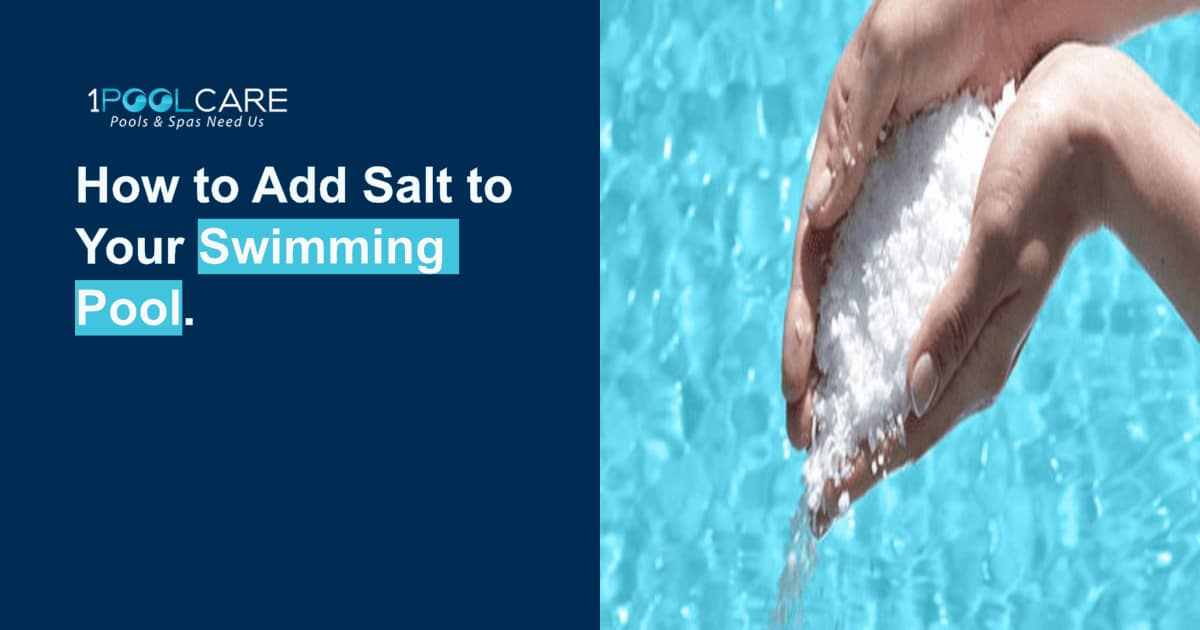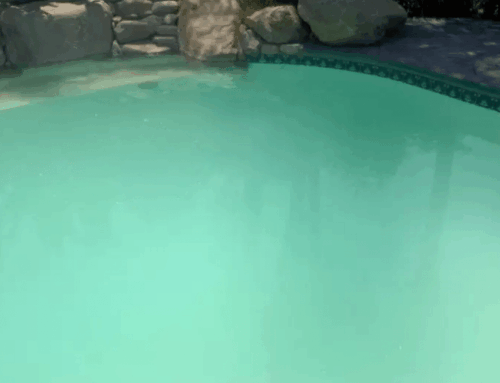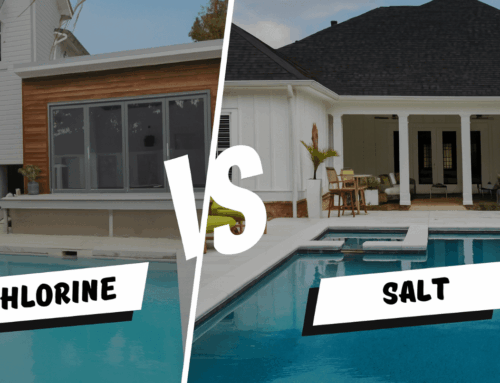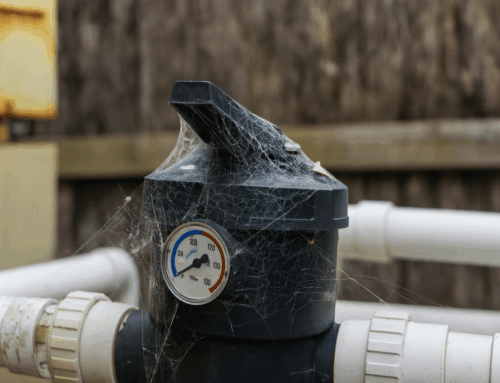
Test and balance pH and alkalinity, switch the salt chlorinator off, broadcast pool grade salt evenly around the edge, brush to dissolve, circulate up to 24 hours, re test salinity, then turn the chlorinator back on. These simple steps keep your swimming pool comfortable and your chlorine generator working efficiently.
What does a saltwater pool actually mean
A saltwater pool uses a salt chlorine generator to convert dissolved salt into chlorine. Inside the cell, electrolysis splits the salt so your system creates the sanitiser that keeps pool water crystal clear. For the full process, see How Does a Saltwater Pool Chlorinator Work?
Is a saltwater pool the same as a chlorine pool
Yes. The sanitiser is still free chlorine, but you make it on site instead of adding tablets. Output rises or falls with salinity, water temperature and run time. If you want a general explainer on tablet and liquid systems, read How Does a Pool Chlorinator Work?
What type of salt do you use for pools
Use high quality pool salt, 99.8 percent sodium chloride, without anti caking agents or iodine. Bags labelled specifically as swimming pool salt dissolve faster and leave fewer insoluble other minerals on the pool surface.
How much salt does a pool need
Target the cell’s recommended salt level, commonly 3,000 to 3,500 ppm. Work out how much salt to add from the pool volume. As a guide, about 1,000 grams of salt per 1,000 litres raises salinity by roughly 1,000 ppm. Always dose in stages, then verify with a digital salinity tester or salt test strips before adding more. For accurate measurement technique, follow Testing Pool Water.
Quick calculator example
- 40,000 litres starting at 1,500 ppm, target 3,200 ppm.
- Increase needed: 1,700 ppm.
- Salt required: about 40 kg to 70 kg depending on temperature and mixing.
Add half, allow circulation, test, then top up to the desired level.

Can I add salt to any pool or do I need special equipment
You need a correctly sized salt chlorinator and cell, plus plumbing that provides steady flow across the electrodes. Shop compatible models here: Pool Equipment: Pool Chlorinators
How often do you need to add salt to a pool
Top up after water loss. Backwashing, splash out, vacuuming to waste and heavy rain all reduce salinity. Expect small adds a few times a season. If you have a media filter, learn when and how to service it in Backwashing a Pool.
What are the pros and cons of a saltwater pool
Pros: steadier chlorine production, softer feel on skin and eyes, fewer tablet refills.
Cons: upfront cost, periodic cell cleaning, the need to keep salinity in the ideal salt level for reliable output. Day to day care is simple when you follow Saltwater Pool Maintenance.
Does salt make the water feel different on skin and eyes
Most swimmers prefer the feel at typical salinity, but comfort still depends on pH and free chlorine. Keep pH levels and chlorine levels in range to avoid irritation. Reliable tools live here: Pool Equipment: Pool Test Kits.
Will salt damage pool surfaces or equipment
Balanced water protects surfaces and equipment. Corrosion issues usually trace back to neglected water chemistry, not salt itself. Maintain pH, alkalinity and calcium hardness so the filtration system and fixtures last.
Does climate or rain affect pool salt levels
Yes. Rain dilutes the pool and lowers the salt level. Hot, windy days increase evaporation and can concentrate salt slightly while also raising demand for chlorine. Use a fitted cover between swims to slow dilution and debris input: Discover the Best Pool Cover Australia Has to Offer
What is the ideal salinity range for a saltwater pool
Follow the manufacturer’s instructions, commonly 3,000 to 3,500 ppm. Running below target reduces output and may trigger low salt warnings. Running far above target can shorten salt cell life. Dose slowly and retest before you add more bags.
Do you still need other chemicals with a salt pool
Yes. A salt system simplifies chlorine dosing, but you still control alkalinity, pH, calcium and stabiliser. Stabiliser protects chlorine from UV, which is essential outdoors. Learn how stabiliser works here: Cyanuric Acid
How long after adding salt can you swim
Once the salt dissolves and circulates evenly, usually within 24 hours, and salinity tests in range. If there are undissolved piles on the floor, keep brushing until clear.
Can I switch from chlorine tablets to salt
Yes. Remove tablet feeders, install a properly sized salt chlorine generator, bring the target salt level into range, and ensure the stabiliser is appropriate for outdoor use. Good circulation and runtime planning keep production steady. For flow and schedule context, see Types of Pool Pumps.
Step by step: adding salt safely
Purpose: get to the correct salinity without overshooting, protect equipment, and keep water clear.
- Test current salt level. Collect a pool water sample elbow deep from the deep end, away from the skimmer and returns. Verify with salt test strips or a digital salinity tester. Note pH, alkalinity and temperature so you can keep water chemistry stable.
- Balance pH and alkalinity. Aim for pH 7.2 to 7.6 and total alkalinity in the ideal range for your surface. Balanced water helps salt dissolve and lets the chlorine generator work efficiently.
- Turn the chlorinator off. Use the control panel to stop output. If you have a timer, pause the salt chlorine generator so it does not misread while salinity is changing.
- Run the pump and circulate. Set a steady speed that pulls from both skimmer and main drain to mix the pool water through the filtration system.
- Determine the correct amount. Calculate bags based on pool size and current salt level. Add in stages to avoid too much salt. If your unit requires 3,500 ppm and you are at 2,800 ppm, top up to target, not beyond.
- Broadcast the salt evenly. Walk around the perimeter and add salt by sprinkling it into the shallow end and along the pool’s edge while the pump runs. Avoid dumping salt directly into the skimmer to protect equipment.
- Brush to dissolve. Use a pool brush to move piles off the pool floor so crystals dissolve quickly. Keep brushing until the surface is clear of grains.
- Circulate and wait. Run the pump for several hours, up to 24 hours in cold water temperature. Warmer water dissolves faster. You can swim once it has dissolved and the salt test confirms your recommended level.
- Re test salinity and adjust. After mixing, test again. If the salt level is below target, add a little more. If you overshot, refill with fresh water to dilute.
- Turn the chlorinator on. Restore power to the cell. Confirm the status lights show normal output. If output is low or lights flash after dosing, follow Your Ultimate Pool Chlorinator Troubleshooting Guide.
Extra tips that prevent problems
- Do not pour salt directly into the cell. Keep granules away from the electrodes to avoid scaling and costly repairs.
- Avoid anti caking agents. High quality pool salt without additives leaves fewer residues.
- Keep records. Note bags added, test results, and runtime so you can predict seasonal top ups.
- Account for water loss. Backwashing and refill events change salinity. Test after storms and after you discharge to waste.
- Above ground pool owners: the process is the same. Walk the perimeter, brush well, and confirm the pump and return jets create a good mix.
Pros and cons recap for new pool owners
- Softer feel with fewer odours. Many report pool crystal water when the system is sized correctly.
- Less manual dosing. The generator keeps chlorine steady across most of the swimming season.
- Still needs weekly checks. Regular water testing ensures enough chlorine, correct pH and a stable stabiliser level.
- Cell care matters. Inspect and clean the cell as per the maker. A scaled cell cannot work efficiently even if the salt level is right.
Common questions
Final checklist
- Test first, then dose. Never guess how much salt to add.
- Use pool salt. Broadcast evenly and brush until dissolved.
- Let it mix. Circulate up to 24 hours, re test, then enable the cell.
- Maintain chemistry. Keep pH, alkalinity and stabiliser right so the cell can deliver a steady sanitiser level.
- Monitor after rain and backwash. Small top ups keep the system in the sweet spot without spikes.
Follow this process and your saltwater pools will stay clear, comfortable and easy to run, with the salt chlorine generator producing the right amount of sanitiser for your exact needs.
Conclusion
Add the right amount of pool salt, dissolve it fully, and verify salinity before you restart the chlorinator. Keep pH and alkalinity in range, log test results weekly, and top up after backwashing or heavy rain. When the cell is clean, salinity sits near 3,000–3,500 ppm, and the pump runs long enough each day, you will hold clear, comfortable water without guesswork.

With over 20 years of industry experience, Adrian Mole is the founder of 1 Pool Care, a leading mobile pool service in Perth. Known for his expert knowledge and reliable service, Adrian delivers professional pool cleaning, equipment repairs, and water balancing across the metro area. Backed by SPASA accreditation, he’s committed to quality, convenience, and customer satisfaction.











Social Media